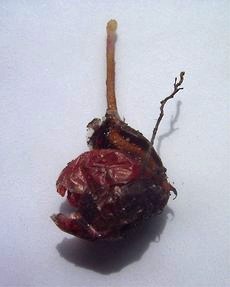Drosera





Drosera, commonly known as the sundews, is a genus of carnivorous plants comprising over 200 species. The name Drosera derives from the Greek word drosos (δρόσος), meaning "dew" or "dewdrops", referring to the glistening drops of mucilage at the tip of each tentacle that resemble morning dew.
Description[edit]
Drosera species are characterized by their sticky, glandular tentacles that cover their leaf surfaces. These tentacles secrete a sticky mucilage that traps and digests insects, which are lured to the plant by the mucilage's sugary scent. The digestion of these insects provides nutrients, such as nitrogen, that are often scarce in the environments where these plants grow. Drosera species vary greatly in size, form, and habitat, ranging from tiny, annual herbs to large perennials, and inhabit a wide range of habitats from soil rich in organic matter to those that are nutrient-poor, such as acidic bogs and rock outcroppings.
Distribution and Habitat[edit]
Drosera is found on all continents except Antarctica, with a major concentration in Australia and South Africa. These plants prefer acidic, nutrient-poor soils and are commonly found in bogs, marshes, and fens. They have adapted to a wide range of habitats, from tropical rainforests to arid deserts, although most species thrive in open, sunny locations where moisture is abundant.
Carnivorous Mechanism[edit]
The carnivorous mechanism of Drosera involves the secretion of a sticky mucilage from glandular tentacles. When an insect or small animal comes into contact with this mucilage, it becomes ensnared. The struggling prey stimulates the tentacles to bend and wrap around it, further securing it. Enzymes are then secreted to digest the prey, and the nutrients released are absorbed by the plant. This adaptation allows Drosera to thrive in nutrient-poor environments by supplementing their nutrient intake with the nitrogen and other minerals obtained from their prey.
Reproduction[edit]
Drosera reproduces both sexually, through the production of flowers and seeds, and asexually, through various means such as root cuttings, leaf cuttings, and the formation of gemmae in some species. The flowers of most Drosera species are small and white or pink, borne on solitary, leafless stalks. They are typically self-compatible, allowing for self-pollination, although cross-pollination by insects can also occur.
Conservation[edit]
Several Drosera species are considered threatened or endangered due to habitat loss, pollution, and over-collection. Conservation efforts are in place in various regions to protect these unique carnivorous plants and their habitats.
In Culture[edit]
Drosera has fascinated people for centuries, not only for its carnivorous nature but also for its medicinal properties. Historically, it has been used in folk medicine to treat various ailments, although scientific evidence supporting these uses is limited. Today, Drosera is popular among carnivorous plant enthusiasts and is cultivated worldwide for its unique appearance and insect-trapping abilities.
Ad. Transform your life with W8MD's Budget GLP-1 injections from $75


W8MD offers a medical weight loss program to lose weight in Philadelphia. Our physician-supervised medical weight loss provides:
- Weight loss injections in NYC (generic and brand names):
- Zepbound / Mounjaro, Wegovy / Ozempic, Saxenda
- Most insurances accepted or discounted self-pay rates. We will obtain insurance prior authorizations if needed.
- Generic GLP1 weight loss injections from $75 for the starting dose.
- Also offer prescription weight loss medications including Phentermine, Qsymia, Diethylpropion, Contrave etc.
NYC weight loss doctor appointmentsNYC weight loss doctor appointments
Start your NYC weight loss journey today at our NYC medical weight loss and Philadelphia medical weight loss clinics.
- Call 718-946-5500 to lose weight in NYC or for medical weight loss in Philadelphia 215-676-2334.
- Tags:NYC medical weight loss, Philadelphia lose weight Zepbound NYC, Budget GLP1 weight loss injections, Wegovy Philadelphia, Wegovy NYC, Philadelphia medical weight loss, Brookly weight loss and Wegovy NYC
|
WikiMD's Wellness Encyclopedia |
| Let Food Be Thy Medicine Medicine Thy Food - Hippocrates |
Medical Disclaimer: WikiMD is not a substitute for professional medical advice. The information on WikiMD is provided as an information resource only, may be incorrect, outdated or misleading, and is not to be used or relied on for any diagnostic or treatment purposes. Please consult your health care provider before making any healthcare decisions or for guidance about a specific medical condition. WikiMD expressly disclaims responsibility, and shall have no liability, for any damages, loss, injury, or liability whatsoever suffered as a result of your reliance on the information contained in this site. By visiting this site you agree to the foregoing terms and conditions, which may from time to time be changed or supplemented by WikiMD. If you do not agree to the foregoing terms and conditions, you should not enter or use this site. See full disclaimer.
Credits:Most images are courtesy of Wikimedia commons, and templates, categories Wikipedia, licensed under CC BY SA or similar.
Translate this page: - East Asian
中文,
日本,
한국어,
South Asian
हिन्दी,
தமிழ்,
తెలుగు,
Urdu,
ಕನ್ನಡ,
Southeast Asian
Indonesian,
Vietnamese,
Thai,
မြန်မာဘာသာ,
বাংলা
European
español,
Deutsch,
français,
Greek,
português do Brasil,
polski,
română,
русский,
Nederlands,
norsk,
svenska,
suomi,
Italian
Middle Eastern & African
عربى,
Turkish,
Persian,
Hebrew,
Afrikaans,
isiZulu,
Kiswahili,
Other
Bulgarian,
Hungarian,
Czech,
Swedish,
മലയാളം,
मराठी,
ਪੰਜਾਬੀ,
ગુજરાતી,
Portuguese,
Ukrainian
